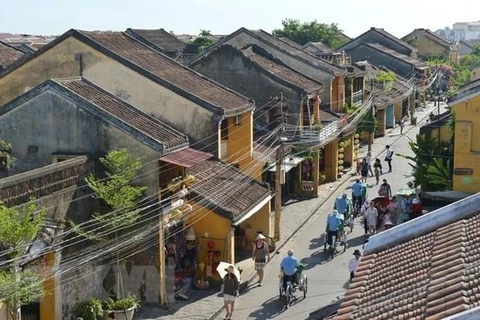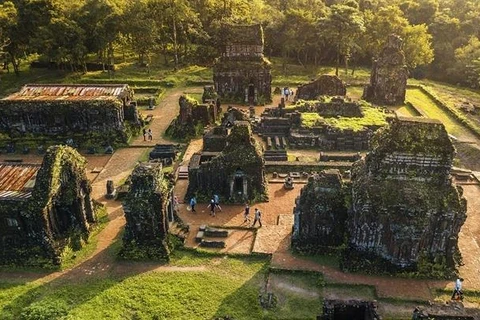Hanoi (VNA) – Prepared to welcome more visitors, yet Hoi An is still facing the risk of overload, especially in the core of the heritage.
Hoi An ancient streets are one of the world’s cultural heritages, a must-visit place to foreign tourists whenever they come to Quang Nam province in particular and Vietnam in general. However, in face of the pressure caused by the urbanization and climate change, the need to find out an orientation for sustainable development for Hoi An has become so urgent.
Trademark in foreign tourists’ mind
Hoi An has always been a top attraction in the world in recent years as it is considered as a living museum in terms of history, architecture and urban life. The number of tourists to Hoi An is on an constant increase, from nearly 100,000 in 1999 to over 2.5 million in 2019. Hoi An now counts over 600 accommodation establishments with more than 10,000 rooms.
Tourism and services occupy over 70 percent of the city’s GDP, and the livelihood of the locals has improved constantly. However, the rapid development is creating a pressure on the ancient street space.
Overcoming other famous cities in the world like Tokyo of Japan or Rome of Italy, Hoi an ancient city of Vietnam’s Quang Nam province has been selected by the world’s top travel magazine Travel + leisure as the most excellent destination in the world. The CNN has also praised Hoi An as one of the most beautiful ancient cities in Southeast Asia, listing out the reasons why tourists should come to Hoi An, with the first being the mixture of cultural and historical sketches with influences from Japan, China, Portugal and France.
In 1999, the number of tourists to Hoi An was only 100,000, but the figure rose to over 2.3 million in 2018. Also in 1999, the number of accommodation facilities in Hoi An was only 17 but it rose to 638 in late 2018 with 10,464 rooms. The current average per capita yearly income in Hoi An is nearly 46 million VND (2,000 USD).
 Hoi An ancient streets in Quang Nam province house many unique cultural characteristics kept intact through centuries, together with poetic beauty, has long been a favourite destination for domestic and foreign visitors. (Photo: VNA)
Hoi An ancient streets in Quang Nam province house many unique cultural characteristics kept intact through centuries, together with poetic beauty, has long been a favourite destination for domestic and foreign visitors. (Photo: VNA)
Facing overload risk
Vice Chairman of the Hoi An People’s Committee Nguyen Van said said that for years, Hoi An has readied itself to welcome more and more visitors. However, it is facing the risk of overload, especially in the core area of the heritage.
Chua Cau relic is a symbol of Hoi An ancient streets, built over 400 years ago. Under the influence of the time, it has seriously downgraded. Yet each day it has to welcome other 4,000 visitors.
One of the solutions applied by Hoi an authorities is to reduce the flow to the ancient streets by developing more products in suburban areas in service of the visitors, but this is not a fundamental measure.
During a symposium held in late November, Architect Hoang Dao Kinh held that starting from the correct perception on the historical value, Hoi An authorities are taking the right way for urban development, developing eco tourism, not administrative or industrial metropolis. This is a long-term solution that ensures harmony between preservation and development.
However, in face of both subjective and objective impact on Hoi An ancient streets, Kinh held that it is time to look to a long-term development strategy for the city. It lies in the advocates and policies of persistently implementing the development orientation for the city in the direction of developing it in the continuity of the past, present and future.
Director of the Hoi An management and preservation centre Nguyen chi Trung said in order to provide good services to the work, Hoi An authorities have listed and classified its 1,432 relics, including 29 of the national level and 46 of the provincial level.
Since 1999, as many as 424 projects have received investment of nearly 153 billion VND for the preservation work, of which 38 billion VND is sourced from the central budget and over 90 billion from the city’s coffer./.
























